Of Laird's and Lard Bread Stuffing
Spending Time With the Country's Oldest Distillery and Oldest Holiday.
The oldest continually operating liquor producer in the United States is Laird’s, which has been making apple brandy since 1780 (though the Laird family was making spirits long before that). Given its significance, and its location just outside New York City, in northern New Jersey, you’d think I would have visited at some point in my 18-year career as a booze writer. But I haven’t. There’s a simple reason for this. I’ve never been invited. And the Laird’s headquarters, in the tiny hamlet of Scobeyville, in Monmouth County, is not open to the public.
That changed recently when I and some other cocktail-world professionals were invited to a book event on the Laird’s grounds. The book was The Cocktail Parlour by Nicola Nice, a volume I’ve written about before in this space, about the role women authors played in the popularization of cocktails in the United States. I could hardly say no to such an opportunity.
Though fiercely associated with New Jersey (apple brandy is nicknamed Jersey Lightning, after all), Laird’s no longer distills in the Garden State. There are simply not enough apples to serve its production needs. Instead, the company distills in upstate New York and Virginia, and only blends and ages the resulting spirits in New Jersey. But the spacious old Laird’s property remains the company’s headquarters. The surrounding roads have names like Laird Road and Orchard Lane.
The grounds are dominated by an elegant old, three-story, white clapboard house with yellow shutters and a balcony out front. The house was built in 1849 and several successive generations of the Laird family lived there. Current President Lisa Laird Dunn (from the ninth generation of Lairds) was born there, the last member of the family to call the structure home. Today, the building is given over completely to offices. The sunken board room on the second floor was once a bedroom.
There is also a dilapidated old barn on the property; a bottling plant where Laird’s does a lot of contract work for other labels (“5 O’Clock Vodka”!); and a one-story warehouse where hundreds of barrels of apple brandy are laid down to age. Laird’s status as the grand old man of American distilling is made clear by the stenciled lettering on the large metal door: “Internal Revenue Bonded Warehouse No. 1.”
The house and warehouse are full of curious artifacts that taught me there was still plenty to learn about the history of Laird’s. I did know that Laird’s—so synonymous with apple brandy—has long made other spirits. Old bottles of Laird’s Vodka and Laird’s Gin attested to that. I had never seen, however, the tall, hand-blown, ruby-crackled-glass decanter with the striking teardrop-shaped stopper. The label told me it once contained 6-year-old applejack. Lisa Laird said it had only been produced once, in the 1960s, as a Christmas promotion (hence, the red color).
And what of the other curious old bottles of apple brandy scatted here and there? There was one called, hilariously enough, Cracker Jack, made in Eatontown, NJ. And another called Old Catskill Apple Brandy. Were these, too, one-time products of Laird’s?
No, there had been rival brands. New Jersey once contained dozens of distilleries producing apple brandy. Over the course of the 20th century, Laird’s bought them out, one by one, until it was the last applejack standing. Lisa Laird said that, in retrospect, that this might not have been the most far-sighted business policy, because Laird’s, in erasing the competition, effectively all but eliminated apple brandy as a liquor category in the United States.
There was also evidence of previously unknown apple brandy cocktails. One exhibit told of a drink called the Missouri Mule, first made by Joe Gilmore, one-time head bartender of the American Bar at the Savoy in London, for President Harry Truman. The recipe, however, was confusing: “1 part: Campari, Cointreau. 2 parts: Bourbon whiskey, applejack, lemon juice.” (Please write to me if you can makes heads or tails out those measurements.)
In the warehouse, I spotted an old ad for a Laird’s drink called The Jackknife, touted as the “Newest Drink Temptation.” Nothing in the ad explained what was in the drink, and no one on hand knew anything about it.
It seemed strange to me that—in this golden age of distillery tourism—such a beautiful, historic property was not open to the public. It apparently seemed odd to Lisa Laird, as well, for the company has plans convert the old barn into a visitors center. Laird’s hopes to open it in 2025.
The bucolic Laird’s estate is Americana personified, and touring it on a crisp fall day put me in mind of Thanksgiving, a tradition as American and as old as apple brandy, and one where apples typically make an appearance in one way or another.
Mary Kate has something to say about the upcoming holiday, and a few choice recipes…
Mary Kate here —
I can make a Thanksgiving dinner with my eyes closed. This isn’t bragging, it’s true. And it’s all thanks to one thing: Shop Rite free holiday turkeys.
My sister, Anne, my mother and I all “won” them for Thanksgiving, Christmas and Easter—they were “free” with an additional $400 worth of purchases. And since we all dined together, we only needed one for the holidays. That’s nine turkeys a year (though we did throw in a ham or two). Over several decades that adds up to me making a lot of turkeys—and stuffing, mashed potatoes, peas, Brussels sprouts and, last but not least, gravy.
Yes, gravy, that make-or-break, do-or-die glue that holds each holiday together. I have worked my way in and out of trouble with a lot of gravies—not enough flour; too much flour; didn’t cook it long enough; cooked it too long; how to make a kosher one; too much salt, and, the worst of the worst, beige-colored gravy.
I’m really looking forward to Thanksgiving this year, just spending time together with the Macy’s Thanksgiving Day Parade on the TV in the background in the morning, then later on, half the crowd watching football and the rest in the kitchen.
Robert mixes up Old Fashioneds for everyone at his Aunt Sandy’s house. She’s the last of her generation from his mother’s side of the family—and best of all, she lets me help in the kitchen, which is great because she’s an amazing cook and l learn a lot. When I’m on my own in the kitchen, I miss that. I miss my mom teaching me her way of doing things, her mom Laura Kitchen’s way and even her great-grandmother, Caroline Bliss Carhart’s way.
We once made a video of Mom making gravy, so we’d never forget. That memory had me thinking about family recipes and how much they mean. They are so much more than just a recipe. I can look up a recipe online and prepare it, but that doesn’t make it “Nana’s gravy.” There is a powerful portal to my family memories hidden in Nana’s gravy.
So, this year I taught my son Richard to make my lard-bread stuffing. He loves it, and it’s a recipe that I made up myself. I’m very proud of it. It reminds me of my beloved Brooklyn neighborhood, the place where my son was born thirty years ago. He was a natural in the kitchen and an amazing celery and onion chopper. He also managed not to eat half the stuffing before it went in the oven (something, you may remember, that my sister Betsy and I could not do). I hope he continues the tradition, but even if he doesn’t, we will have the memory of making it in the kitchen together this year.
We have also included some recipes here from fellow Mixers. Both are related to “In Search Of…” food features that we published this year: one about Coddies, a Baltimore treat; and one about Schaum Torte, a favorite dessert of Wisconsin.
Judy Shertzer’s aunt Agnes Reasor Olmstead—in professional circles known as “Nancy Carter"—made a version of the Schaum Torte called “The Forgotten Torte.” And Wendy Scherer’s great-grandfather, Sam Sherman, was a professional Coddie maker in Baltimore. Their recipes and some memories are below.
Of course, I’m including my recipe for Lard Bread Stuffing. Try it, it’s good. Friend of The Mix, Julie Besonen, made it for her family last Thanksgiving and they loved it.
Happy Thanksgiving!
Forgotten Torte
Recipe by Agnes Reasor Olmstead, in professional circles known as “Nancy Carter."
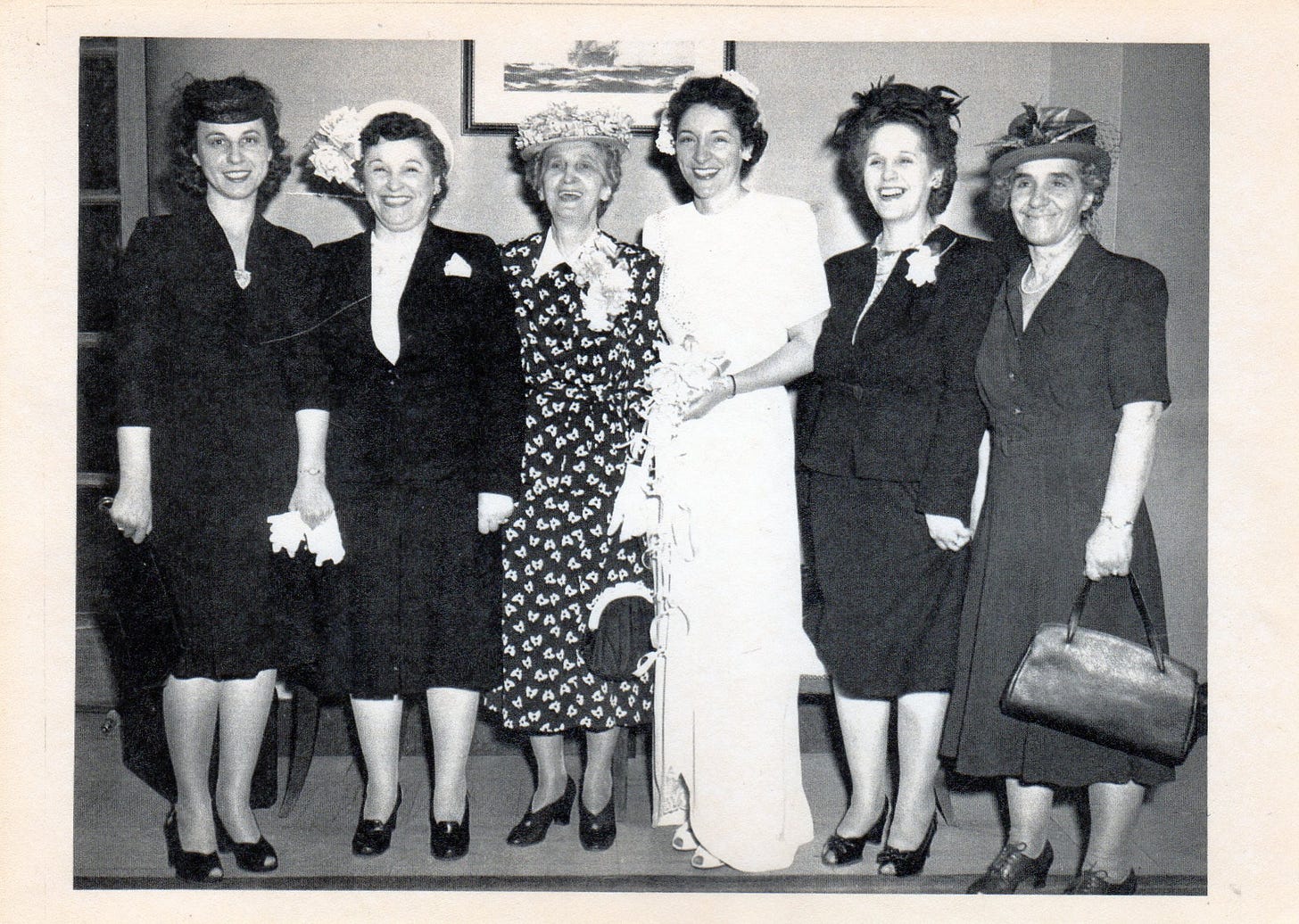
Judy Shertzer’s great-aunt Agnes wrote for the Atlanta Constitution, but she also had a life as alias “Nancy Carter.” And when Robert wrote about the Schaum Torte, she left comments about her Aunt Agnes’ “Forgotten Torte.” Judy generously sent me the recipe and some others as well. She talked about her Aunt Agnes and even mentioned something called Dyngus Day, (a thing that I didn’t know existed). So, I emailed Judy and asked if we could share her family story, her Aunt’s recipe, and maybe if she could please tell me what the heck Dyngus Day was! Judy responded and I’m going to let you hear Agnes’ backstory in her own words:
My great aunt graduated from Purdue in 1931, and got married in Chicago in 1948, then at some point moved to Atlanta. I thought she was the most sophisticated person I'd ever met. I'd give anything to have lived in their split-level modern house perched in the middle of the woods in Atlanta. The earliest publications of hers that I've found written for the Colonial stores (at one time there were up to 300 of these stores) are dated 1953. I found 2 mentions of Forgotten Torte in the publications I have—the first from 1954, the second from 1958. I've attached pictures of both. The "Nancy Carter TV Cookbook" page was an in-store giveaway that went with her weekly TV program likely on public access. I just found a collection of them in a 3-ring binder cookbook that must have been part of a weekly in-store giveaway. The second mention of the recipe comes from a standalone pamphlet, likely given away at the store as well, although you could request them by mail. I've also included a picture from her wedding in 1948, surrounded by my great-grandmother (on the bride's right in the patterned dress), my grandmother (a twin, on her mother's right with the white hat and big grin) and the rest of my great aunts. It was a German family of 5 girls and 3 boys. I was born in 1958 and know my mother made this torte as early as the ‘60s from my great aunt's recipe. We ate a lot of German food that I didn't understand was German until I grew up.
Dyngus Day!!! Where to start. It is the day after Easter, and in South Bend it's a tradition for local politicians to appear and campaign at parties held at social clubs where beer, hard boiled eggs, and sausages are consumed. I can't explain why. To "Dyngus" is a verb here—” Did you Dyngus this year?” RFK, Jr., Bill Clinton, Barack Obama and Pete Buttegieg (our beloved former mayor) have all Dyngused. Wikipedia has a traditional Polish explanation; https://en.wikipedia.org/wiki/Śmigus-dyngus. My SO has yet to chase me around with pussy willow switches or throw water on me, which is probably better for his health. HA!
Attached is the recipe for Forgotten Torte my mom and great aunt made. Notice that it calls for branded products sold at The Colonial Stores. As far as I know, she was also the first person on my maternal side to attend college, graduating from Purdue with a home economics degree (my alma mater as well). We all grew up in South Bend, which has always been a strong Polish community as well (which is why I was always confused when I met people who didn't celebrate Dyngus Day—Didn't everyone?). Please note, Mary Kate, this is touted as a "never fail dessert"!! Go for it!
-Judy Schertzer
Sherman's Coddies
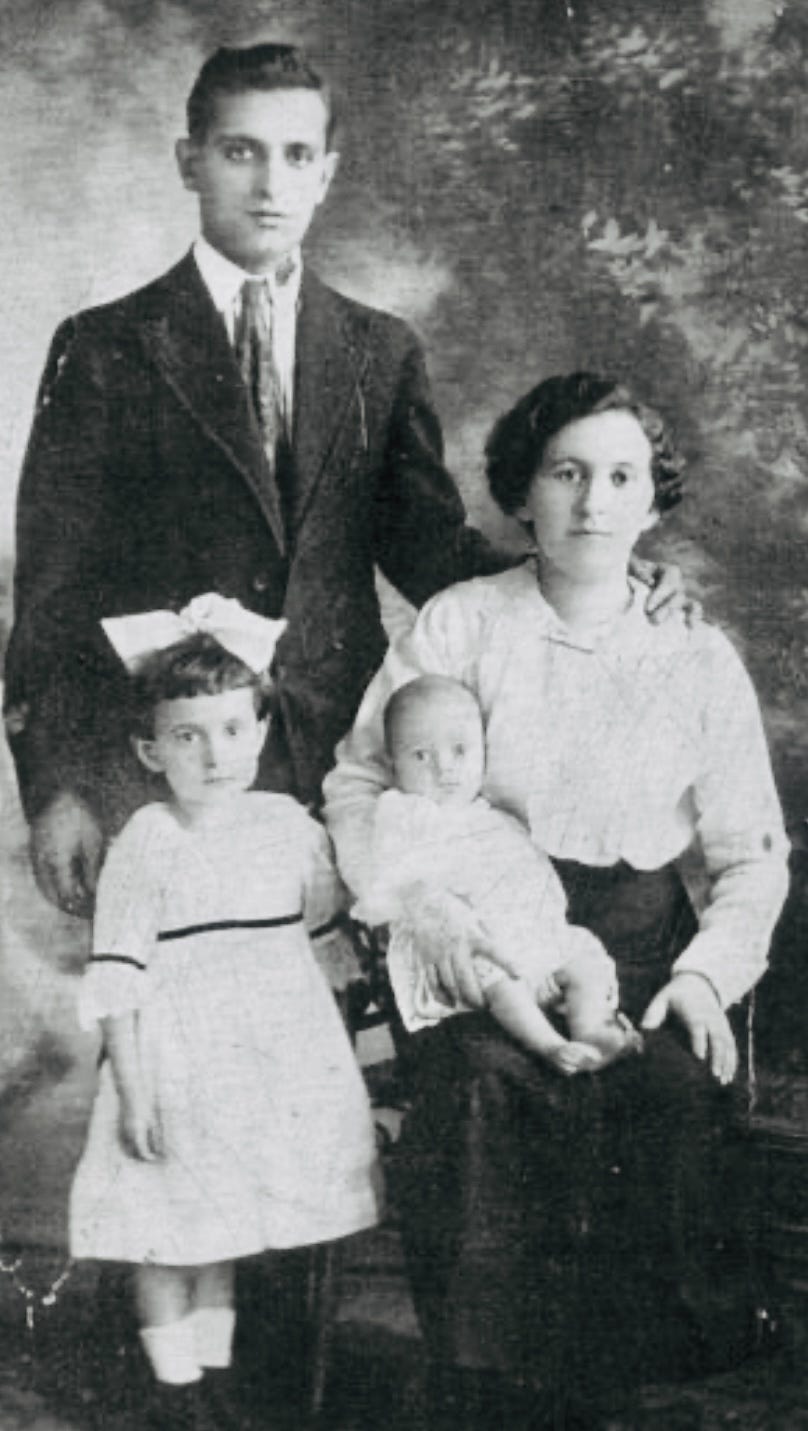
I love the idea of serving Coddies on Thanksgiving. They are a very American food, traced back to the recipes of African slaves, and Jewish and Catholic immigrants. And they are delicious—even at room temperature. This makes them the perfect food for that odd time between a late breakfast and the early Thanksgiving dinner. Set them out on the coffee table for people to nosh on until the Thanksgiving meal is called.
Like Judy, Wendy Scherer wrote a bit about her family’s history. She made a post about Coddies on her Finding Blanche Word Press in 2008 (you can read about that here.) It’s a beautiful reminiscence; please enjoy:
Knowing my family history offers me a sense of belonging and identity. Knowing my ancestors' stories connects me to a broader narrative, grounding me in our cultural roots. I have a sense of pride and appreciation for the struggles and triumphs of those who came before us.
I read the news for a living. Well, that is not exactly right, but it’s sort of true. My work in social intelligence means that I must be aware of the happenings, trends, social networks, and conversations that are happening today and every day. Some of my work involves current events, but regardless of the subject matter I am focusing on for the day, it would be impossible to avoid the distressing global news. I doubt you can avoid it, either—not that any of us would want to. We have to know, be aware, and be citizens of the world.
When Russia invaded Ukraine more than two years ago, I cried and watched in horror. My family, like so many Jewish families, came here from the Pale of Settlement. Ukraine and surrounds had been their home.
My great-grandparents were newly married with an infant when they left Ukraine. Sarah Owrutsky and Sam Sherman. Sam Sherman came from an affluent family of glassblowers. His family didn’t entirely approve of him marrying because of their ages—Sam was 18 and Sarah was 16 years old—but also because Sarah’s family was considered more working class. But nothing would dissuade this couple—their love was instantaneous and would last forever. Once settled in America, Sam and Sarah worked extremely hard at the coddie business. If you’re not a Baltimorean, you might not know that coddies are scrumptious fried codfish and potato cakes, with some rice and spices mixed in. They are traditionally sold with a pack of crackers and dab of mustard. If you can’t imagine what a coddie tastes like, I’ll tell you. Coddies taste like home feels.
Waking at early hours and struggling to make and distribute the coddies and also run a small store, Sam and Sarah supported the entire Owrutsky pilgrimage, sponsoring his seven siblings and their families to the United States. I have a lot of cousins!
Anyway, back to Ukraine. When Sarah and Sam got married, their village gave them a Kiddush cup as a collective wedding gift. It’s tiny, only 2-1/2” tall. The etchings represent the rural village. It’s truly special.
I loved the cup as a child. My great-grandparents (Bubby and Zayde) would let me hold it when I came to see them. Later after they died, my grandmother exhibited the tiny cup in her breakfront. It was always the first thing I saw when I went to visit.
And one day when I was in my twenties, on a random visit, my Nana gave the little cup to me. She told me that she entrusted me with its forever life.
Regardless of their size, Kiddush cups serve as a central symbol in Jewish religious rituals, representing the sanctity of tradition, the joy of celebration, and the bonds of family and community. And so this is true of my little Kiddush cup. It is one of my most prized possessions. My husband and I used it in our marriage ceremony. Our boys each used it for their b’nai mitzvot. It has been on the table for every holiday and every Shabbat for decades.
I think of my family, especially my Bubby and Zayde, every time I see it. I am grateful for their love and sacrifice and for their dedication to building a family that would grow and live free. The cup connects me to my family and our history and it’s impossible not to think about others who overcome difficult situations because of their family’s support and love. This tiny Kiddush cup is in my hands for safe-keeping, but it’s really only mine temporarily. It’ll be cherished by the next generation and the next chapter in its forever life.
-Wendy Scherer
Recipe: Sherman’s Coddies
Recipe originally by Samuel Sherman, adapted by Wendy Scherer’s mom, Nadine Goldman (she is one of Sam and Sarah’s 7 grandchildren). Wendy wrote a note about her great-grandfather Sam Sherman’s recipe:
“My mother wanted me to remind you that she took my great grandfather‘s recipe and it was meant for like 50 pounds of fish and she divided it out to try to make it a decent smaller size recipe so it might not be perfect!”
1 package cod fish (wow that's nonspecific)
1/4 cup rice
4 large potatoes
Sprinkle red pepper
Sprinkle dry mustard
1 egg
Cook potatoes and mash well. Add pasted rice. Let cool. Add fish and seasoning. Mix in cracker meal (not even listed in ingredients!). Deep fry. Note: when cooking rice, use just enough water to cover the rice.
MK here: To paste is to mash something. The potatoes should be peeled before cooking. As for the package of cod fish, I recommend a one-pound size. Also, if I were making these, I would add some cracker or matzo meal to bind them, but like my mom’s fish cakes, I would roll them in the cracker meal, refrigerate for a couple of hours, then fry in a pan with an inch or so of oil.
I’m sure if you had some questions, I could pass them along to Wendy (at the Sherman’s Coddies hot-line, lolz).
Mary Kate’s Lard Bread Stuffing
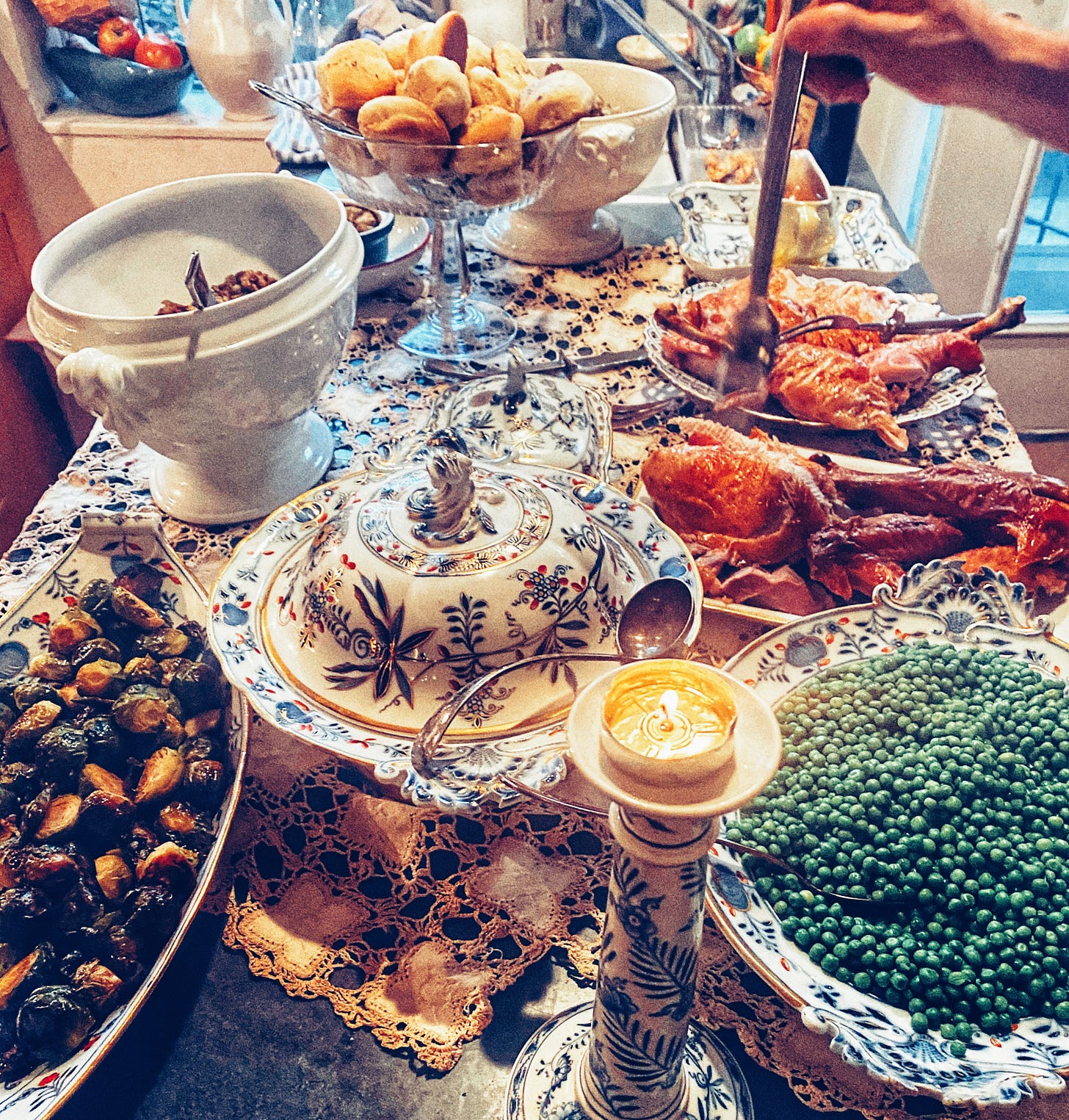
When I first moved to Brooklyn in the early nineties, it was a magical thing to discover this bread. I had never heard of it, but it was hard to avoid, especially when I lived on Sackett Street, near the Caputo, Cammareri and Mazzola Bakeries. All three bakeries sold Lard Bread. For this recipe today, I use Mazzola Lard Bread, which is generally regarded as the best in New York City. I’ve cut and pasted the pictorial step-by-step from last year’s post with the recipe listed at the end.

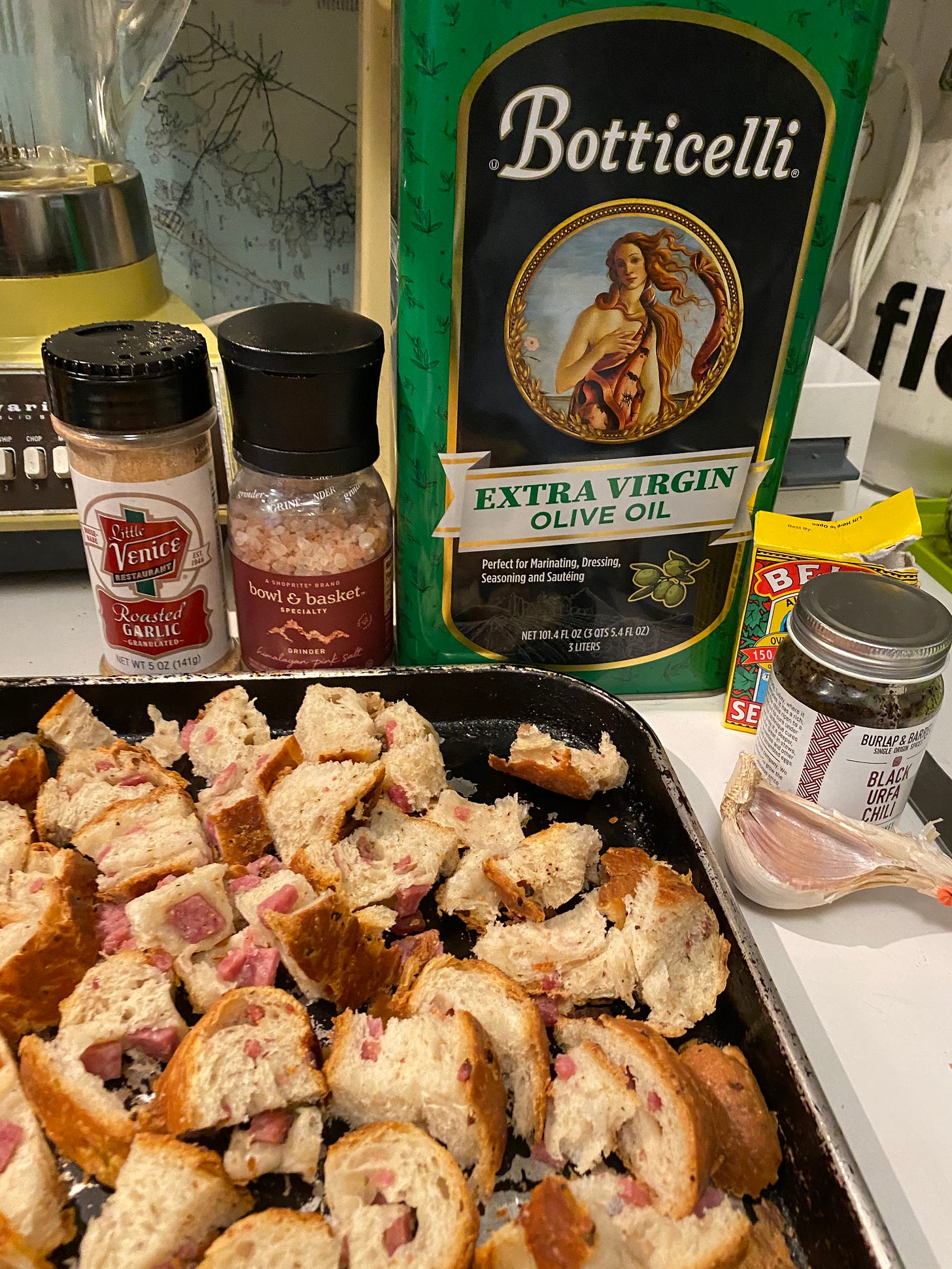


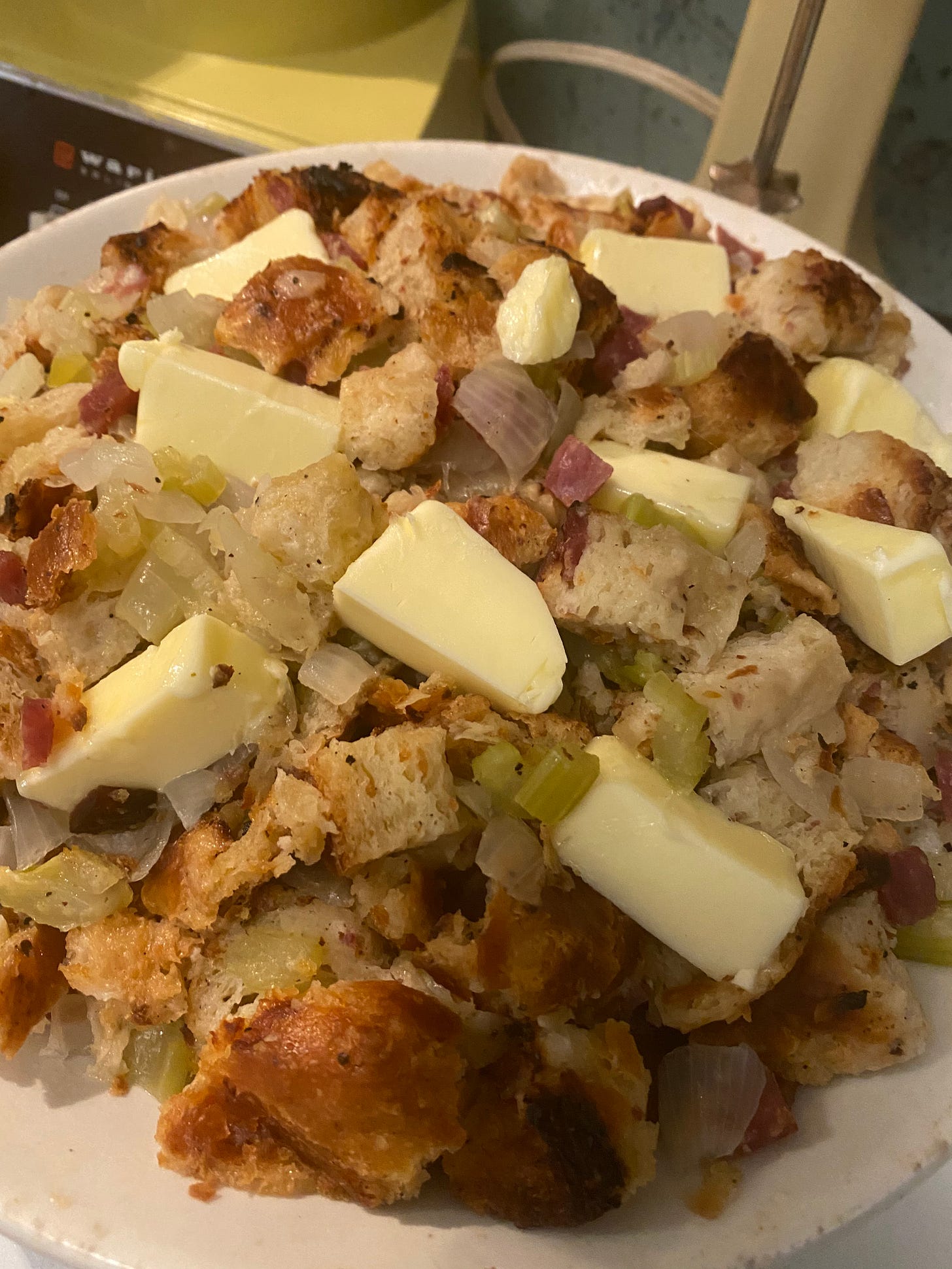
Recipe: Mary Kate’s Lard Bread Stuffing
Ingredients
2 loaves of Lard Bread
1 cup of diced white onion
1 cup of diced celery
3 cups of either giblet juice, chicken broth or water.
1/2 stick of butter.
Additional pats of butter for top of stuffing
Bell’s Poultry Seasoning
Salt
Pepper
Start with 2 loaves of Mazzola Lard Bread (or any other bakery lard bread).
Tear or dice the bread into small cubes and let the bread sit out until it is stale. If you do not have time to let the bread get stale, tear or dice the bread into small cubes and bake in a 275-degree oven until dried out and crispy, approximately 30 mins to 1 hour.
When the bread is dried out, dice 1 cup of onion and 1 cup of celery and put them into a pot on the stove with 2 cups of the chicken broth, giblet juice or plain water. (Reserve 1 cup for later.) Simmer until translucent and soft.
After the celery and onions soften, add a half stick of butter to melt in the hot liquid.
Take the lard-bread cubes and put them in a bowl or pot.
Add the celery and onions.
Start by adding a cup of liquid (broth, juice or water) and sprinkle it over the bread mixture. You want the stuffing to be moist, but not too wet. You will still feel some firmness in the Lard Bread, which will soften as it bakes (because of the lard). If it is too dry, add more liquid. Mix the ingredients to incorporate.
Add Bell’s Poultry seasoning, salt and pepper to taste; and if you like, oregano, thyme (fresh or dried), and sauteed garlic. Season to taste. And I do mean taste! —are you sure it’s perfect? Maybe you ought to taste it again. Mix the ingredients gently.
Butter a 9” x 13” casserole dish. Add the stuffing mixture and dot with pats of butter.
Cover it with foil and bake in a 325-degree pre-heated oven for 30 minutes. Uncover, raise the temperature to 350, then bake for another 30 minutes, or until crispy on top.*
*Note for stuffing novices. This is hard to screw up. Do you want to dump a bunch of fresh herbs on top? Go ahead. You will be covering this in gravy. Add whatever you want. Sautéed sausage?—add it in! How about the meat lover’s stuffing? That’s right—go ahead and add mortadella. You’re doing fine.
Do you have questions about this recipe? Email me at marykatemurray@me.com, I will try to answer them.
And remember—don’t make something for the first time on Thanksgiving! Try it out beforehand.
THE MIX NOTICE NO. 1: We will have more from Laird’s this Friday, including a recipe, for paid customers ONLY. Maybe this is a good time to:
THE MIX NOTICE NO. 2: FRANKSGIVING IS A WEEK FROM FRIDAY! Get your hot dog destination picked out and make sure it’s open on Nov. 29.
THE MIX REMINDER NO. 3: Time to get your Eve cocktails ready for Thanksgiving!!—Many thanks to John Tremain for reminding us all on Threads (@johnnyalpine)!!
Eve Cocktail by Audrey Saunders
(recipe version from M. Carrie Allan, published in the Washington Post 2021):
6 Macintosh apples (about 2 pounds) halved, cored and thinly sliced, plus thin quarter-slices for serving.
One (750-milliter) bottle dry vermouth such as Noilly Prat Extra Dry brand
Step 1
In a quart-sized jar with a lid, cover the cored, sliced apples with the vermouth, doing the best you can to submerge them in the liquid. Cover with a lid and refrigerate for 5 days (up to two weeks) agitating the jar a little each day. (save the original vermouth bottle)
Step 2
When the vermouth is infused, use a fine-mesh sieve to strain it into the bowl, pressing gently on the saturated apple pieces. Transfer the strained vermouth into the original vermouth bottle of your preferred pitcher, and refrigerate until ready to serve. Chill coupes or Nick and Nora glasses in the freezer for at least 10 minutes.
Step 3
When ready to serve, pour the vermouth into chilled glasses, garnish each with a thin slice of apple, if using, and serve. (You can also set the vermouth out in an ice bucket so that people can serve themselves.)





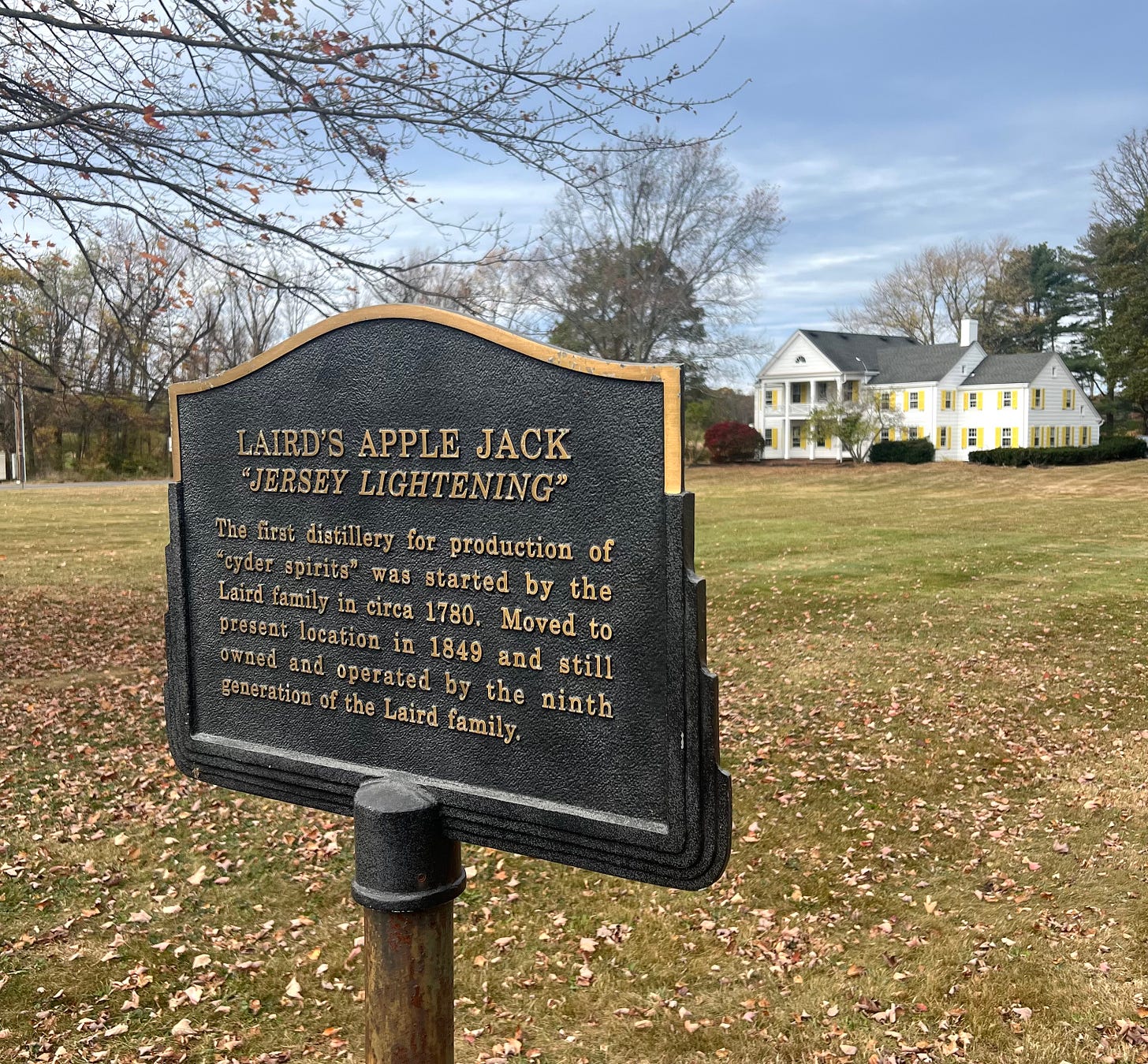



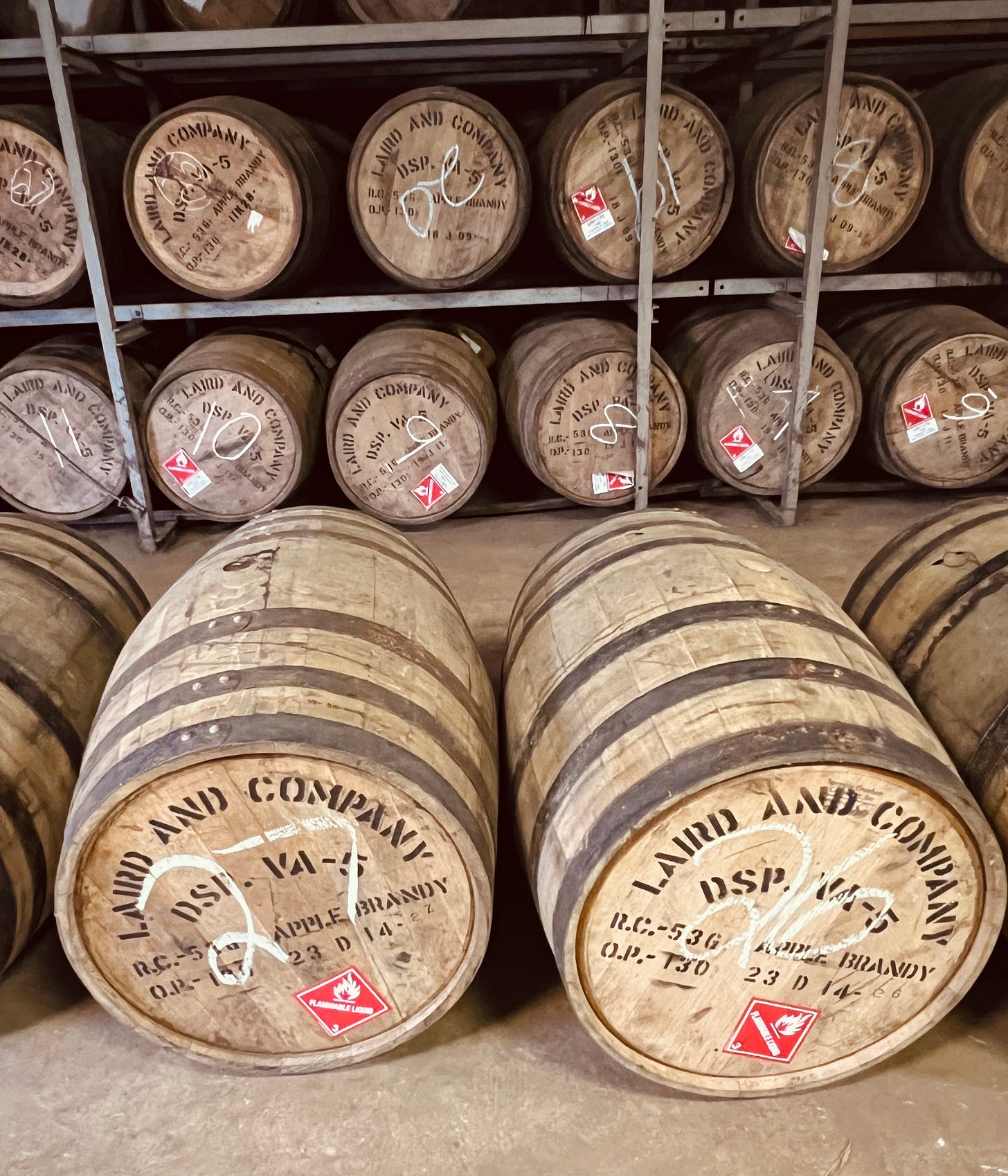



Start making your “Eves”!!! 🍎🍎🍎
Another great story! Representing New Jersey!